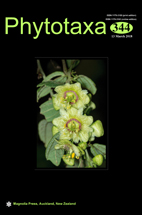Abstract
Centaurea crocata Franco (1984: 474, 572) is the name currently used for a species of Asteraceae that is endemic to a small area in the southwest of Portugal, extending from Monchique (Algarve) to Cercal (Baixo Alentejo). The plant was first collected by Friedrich Welwitsch in 1847, in Monchique, during his residence (1847–1848) in the province of Algarve (Trimen 1873: 3). The following year he collected it again but further north, in Baixo Alentejo. Welwitsch regarded it as a new species and informally named it ‘Centaurea crocea’, as is apparent from the name written on his specimens of this species that are held in LISU (Garcia Jacas & Susanna 1991). However, he never published this name. Later authors working on the flora of Portugal, such as Sampaio (1909: 60, 1947: 597) and Coutinho (1913: 657, 1939: 776) misidentified Welwitsch’s and other collectors’ material as C. prolongoi Boissier ex Candolle (1838: 303, originally published as ‘prolongi’, corrected to ‘prolongoi’ as it commemorates the Spanish botanist Pablo Prolongo y Garcia). It was only much later that Franco (1984), in the second volume of his Flora of Portugal, concurred with Welwitsch’s view that the material belonged to a separate species and described it as C. crocata, using an epithet similar to that of Welwitsch’s unpublished name. Both epithets ‘crocata’ and ‘crocea’ originate from Latin and mean saffron-coloured. Saffron is a product of a species of the genus Crocus Linnaeus (1753: 36), a name with the same origin.

